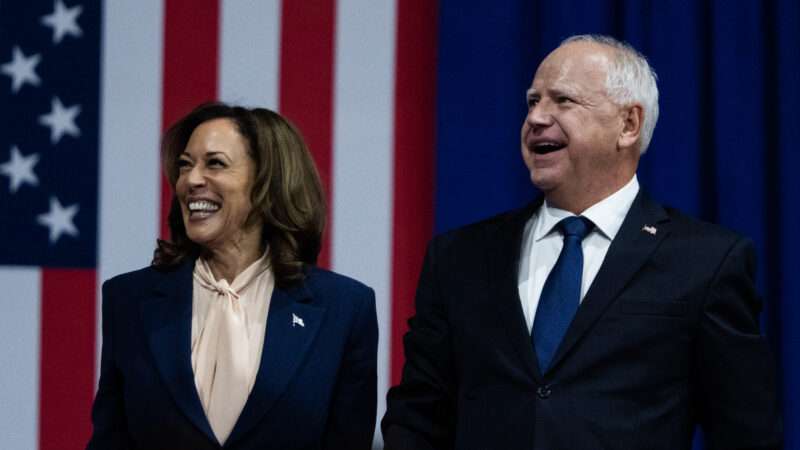
Now that he's been named Vice President Kamala Harris' running mate, Minnesota Gov. Tim Walz's handling of the COVID-19 pandemic is getting a fresh round of scrutiny.
And for good reason. As Reason's Robby Soave detailed yesterday, Walz was a "tyrant" during the pandemic who forced masks onto children as young as five, placed strict limits on even outdoor gatherings, and encouraged Minnesotans to report their neighbors for violations of social distancing rules—rules that we now know were not backed by science.
Another aspect of Walz's pandemic record also deserves a closer look: how Minnesota used its share of the federal stimulus dollars distributed via the $1.9 trillion American Rescue Plan (ARP).
A quick review of the Treasury Department's State and Local Fiscal Recovery Funds (SLFRF) database reveals numerous line items that seem to have little or nothing to do with the pandemic.
For example, Walz oversaw the use of more than $4.3 million (across two line items) to cover parking costs at state facilities "for state employees and visitors." The state used another $1 million to fund a study into the feasibility of paid family leave, and another $1 million to fund a statewide gun safety advertising campaign. State employees in the Minnesota Department of Corrections got more than $1 million in overtime pay, thanks to the ARP stimulus bill. Another $7.8 million was distributed to two homeless shelters in the Twin Cities to cover ongoing costs.
A few other things caught my eye. There's a $929,866 line item for "small business development" to teach minority- and women-owned businesses how to qualify for state contracts. Another $1.8 million funded a grant program for the victims of crime, and $1.24 million was spent on Minnesota's "Grow Your Own" grant program, a state-run initiative that helps recruit teachers and other school employees. The Girl Scouts got $957,794 for an outreach program in low-income communities.
All those may be useful and noble projects, but it remains unclear why any of them were funded with dollars meant for pandemic recovery.
(You can dig through the SLFRF spending database here: For the purposes of this article, I looked exclusively at funds distributed in Minnesota, obviously, and set the filter to include only line items where the recipient name was the "State of Minnesota"—but you can filter by municipality too. There's a similar database available from the National Conference of State Legislatures that you might find easier to navigate.)
A few of the biggest line items should also get more scrutiny, though there is limited information available on the Treasury's site. For example, the state distributed more than $11 million to the Minnesota Zoo and nearly $3.8 million to the Science Museum of Minnesota to cover operating and maintenance costs. In some ways, that is connected to the pandemic: Fear of the disease and government social distancing mandates certainly harmed museums and zoos. The same could be said of the $237,000 line item for a "movie theater relief grant program."
But Walz should be asked why he believes federal taxpayers—who may not live in Minnesota or ever visit the state—should be on the hook to pay for that.
As Reason has reported over the past few years, the federal bailout of state and local governments after the pandemic was largely unnecessary, and many governments have struggled to find ways to use the $350 billion in free cash distributed by the ARP. A good chunk of the funds have been put to questionable use, including subsidizing money-losing, government-owned golf courses, padding the paychecks of public employees, and funding tourism promotion campaigns.
However, Minnesota's state and local governments eagerly gobbled down their shares—according to the Government Accountability Office, Minnesota had obligated more than 99 percent of its share of stimulus cash by September 2023.
Perhaps that speaks in some small way to Walz's effectiveness as an administrator. Faced with an unprecedented firehose of taxpayer cash from Washington, Minnesota's governor quickly found ways to spend nearly all of it. Still, how that money got spent suggests that Walz—like lots of other elected officials—viewed the ARP as more of a slush fund than a direct response to a serious public health problem.
The post Minnesota Gov. Tim Walz Used COVID Relief Money on Things That Had Nothing To Do With COVID appeared first on Reason.com.







